On The Town with Chip Deffaa … for May 18th, 2015
“The Visit”–with music and lyrics by John Kander and Fred Ebb, and book by Terrence McNally, based on the play by Friedrich Duerrenmatt as adapted by Maurice Valency)–is the most strikingly original Broadway musical I’ve seen in years. It is, by turns, dark, cynical, romantic, delicate. I found it fascinating. Its star, Chita Rivera, 82, has so much stage presence I’d be compelled to watch her if she simply stood there. Amazing woman. And utterly in command of the night. But the story itself–of a woman returning to the place in which she grew up, in search of revenge–pulled me in.
And oh! that Kander & Ebb score! I feel lucky to live in the same time as them, and grateful to witness the opening of still another Kander & Ebb musical. It’s their last musical (lyricist Fred Ebb passed away in 2004; composer John Kander, 88, is still very much with us); I was hooked right from the first notes of the prologue. There’s no living Broadway composer I enjoy more than Kander, and there are some sumptuous melodies in this score. (The romantic ballad “You, You, You” is echoing in my head as I write this. And the tart “Yellow Shoes” song–an ode to human greed–is one I look forward to hearing again.)
I sat in the front row (always my favorite spot in the theater)–glad to be watching Chita Rivera so close up. (And remembering Brock Wade and I sitting in the front row when we saw Chita Rivera in the original Broadway production of “Chicago” so many years ago, and her telling us afterwards, at the stage door, that she recognized us, that she’d seen us sitting in the front row.) The evocative lighting (by Japhy Weideman) is great. The set (by Scott Pask) is amazing. Co-star Roger Rees is first-rate.
I hope this musical (directed by John Doyle, choreographed by Graciela Daniele) wins lots of Tony Awards. Starting with ones for Chita Rivera and that rich, wholly satisfying Kander & Ebb score. This was one of the most enjoyable nights I’ve had on Broadway in years. (Veteran actor Fyvush Finkel, sitting near me, sure seemed to be enjoying it, too! And randomly running into an old friend like producer/director Richard Jay-Alexander added to the pleasure of the occasion for me.).
I loved every part of the night. The orchestra itself was a joy. (Musicians were warming up as I entered the house. I could hear violinist Paul Woodiel playfully play a little bit of “76 Trombones.”)
Larry Hochman’s orchestrations are superb; the orchestra evokes both oldtime Eastern Europe and Broadway at its best. Wise use of doubling and tripling on instruments by musicians, and constantly shifting orchestral colors–from time to time, we may hear a zither, a mandolin, an accordion, an oboe, a flute, a piccolo, and so on–make the 10-piece orchestra seem much larger than it is.
This really was a great night–the kind of thing that restores my faith in theater, makes me remember why I fell in love with it in the first place.
When Fred Ebb died in 2004 (he was 76), I wrote a note of sympathy to his longtime collaborator, John Kander. There were no Broadway songwriters, in my lifetime, who’d given me more pleasure, or whose work I admired more. (For me, Kander and Ebb’s greatest shows, “Cabaret” and “Chicago,” represent Broadway at its best.) John Kander wrote me back that he and Fred Ebb had written the scores for four very-different shows that had not yet been seen in New York; and he anticipated that finishing work on those shows and bringing them to Broadway would keep him busy for years to come. The four shows were “Curtains” (which opened on Broadway in 2007, and ran for 511 performances), “The Scottsboro Boys” (which opened on Broadway in 2010 and ran for 49 performances), “The Visit” (which is running on Broadway right now, at the Lyceum Theater), and an adaptation of Thornton Wilder’s :”The Skin of Our Teeth” (which, under the titles “Over and Over” and “All About Us,” has had regional productions but has not yet made it to New York). Kander and Ebb have given us so many memorable songs (in such Broadway shows as “Kiss of the Spider Woman,” “The Happy Time,” and “The Rink,” and such films as “Funny Lady” and “New York, New York”); we are in their debt.
I am glad “The Visit” has finally made it to Broadway. I hope it finds an audience. It is not a conventional Broadway musical and it does not have a happy ending. And mass audiences tend to shy away from musicals that don’t end happily. But it is certainly vivid and memorable theater. I’m eager to see it again. And I’m glad to see both John Kander and Chita Rivera–in their 80s!–making such vital contributions. Chita Rivera made her Broadway debut way back in 1951–64 years ago. She broke through to stardom with “West Side Story” in 1957. She has a long association with Kander & Ebb, having appeared on Broadway in such shows of theirs as “Zorba,” “The Rink,” “Chicago,” “Kiss of the Spider Woman,” and now “The Visit.” She is a musical-theater star. That is not merely a term. She has that indefinable something we call “star quality,” and she owns the stage. Go see her. You won’t regret it.
* * *
If seeing “The Visit” was the best theatrical experience I’ve had of late, seeing the show calling itself “The Ziegfeld Midnight Frolic” (at the Liberty Theater on 42nd Street) was by far the worst theatrical experience I’ve had in a long, long time. The show I saw was a disgrace to the name “Ziegfeld,” which for many years was associated with elegance, class, style, and first-rate entertainers. This supposed “Ziegfeld Midnight Frolic” offers mediocre performers in a confusing hodge-podge of a show. All I can tell you is what I experienced, and it was far from satisfactory. My guest and I sat in box seats, at the left side of the house. An actor case out on stage; he was supposed to be portraying Eddie Cantor, although his makeup made me think more of the Emcee in “Cabaret” than Cantor. Speaking a mile-a-minute, with an air of desperation that I found enormously unappealing, and holding a microphone as close as possible to his lips. he said a lot of things… many of which my guest and I (and others who sat with us in the box) found impossible to understand. I think he was, at times, holding the microphone too close to his lips; perhaps the sound system being used simply didn’t do a very good job in getting sound clearly up to where we were sitting. Perhaps he was not articulating clearly enough. But a great deal of what the actor playing Eddie Cantor (and other performers) said or sang that night was simply unintelligible. I’ve never experienced anything quite like that in a New York theater before. Every word in “The Visit” was crystal clear. As is usually the case in seeing Broadway or Off-Broadway shows. And why use a microphone at all? The Liberty Theater, which was built before microphones even existed, was designed for acoustic performances. Some of America’s greatest stars, from George M. Cohan to Fred Astaire, performed on that stage. They never used mikes in their shows there. And you are calling this show “The Ziegfeld Midnight Frolic”? Ziegfeld never used a microphone in any of his productions.
OK. Let’s move past the issue of poor sound–although that was enough to ruin the night for me. “Eddie Cantor” introduced: “Will Rogers, singing the song ‘I’ll Take Manhattan….'” And an actor supposedly portraying Will Rogers began singing in an undistinguished manner. What was wrong with this picture? Everything! For one thing, the correct title of that famous Rodgers & Hart song is simply “Manhattan,” not “I’ll Take Manhattan.” In addition, the song has no connection to either Will Rogers or Ziegfeld. (It was introduced in another show, “The Garrick Gaieties,” that competed with Ziegfeld’s shows.) And–most important of all–the real Will Rogers never sang a song in a show, in his life. For Ziegfeld, Will Rogers performed rope tricks and offered humorous political commentary, speaking in a folksy way on events of the day. He was not a singer. And here was “Will Rogers,” of all unlikely people, singing this sophisticated Rodgers & Hart song. Why?
An actress supposedly portraying the legendary singing comedienne Fanny Brice was brought on “to sing her latest hit ‘Where’s that Rainbow?'” What’s wrong with this picture? Again, everything. Fanny Brice never sang this song. And it has no connection with Ziegfeld. It’s simply another random Rodgers & Hart song, from a Broadway show produced by another of Ziegfeld’s competitors. “Fanny Brice” was also presented singing “When I Get Low I Get High,” a drug-related song that had no connection whatsoever with either Brice or with Ziegfeld. Why? Mediocre performances of songs that have no apparent reason for being sung by the performers singing them. The fellow playing Cantor was working hard; he reminded me more of a used-car salesman, though, than of any real entertainer. And Cantor was, of course, one of the all-time great entertainers of his day–hugely popular on stage, screen, radio. Go to YouTube. Check out clips of Cantor at his peak. An incandescent, irresistible performer. Was any thought given as the casting of this supposed “Eddie Cantor,” or to how”Cantor” was being depicted? I could accept artistic liberties, and some audio problems, if the fellow playing “Cantor” were at least entertaining. But I found him annoying.
There was a sexy evocation of Josephine Baker, who rose to fame wearing very little when she danced. And the actress had a beautiful body. But once it was displayed, there was no place left to go, theatreically. Some of the ensemble singers/dancers were fun to watch. There was one good special effect–raising showgirls on a chandelier. I can always appreciate spectacle for the sake of spectacle. But this show felt, too much of the time, amateurish in its execution. I’ve seen much better spectacles elsewhere. (The most eye-pleasing, lavishly produced spectacle I’ve ever seen was in a casino in Lebanon.)
No programs were provided to us, listing the names of the actors, or the songs sung, or anything else. Limited seating was available. Some people had to stand the whole night. Some sequences were shown, like silent-movie footage, on a screen. The production attempted to deal with the life and death of Olive Thomas (1894-1920), who worked for Ziegfeld (and had an affair with him), around 1915-1916. But I simply could not follow a good deal of what was going on. Not a fun night for me or my guest.
The idea of putting lavish entertainment in this beautiful space is good one. I liked being in what is left of the Liberty Theater, simply for the history it represents. (It’s a pity the whole theater was not preserved; but the stage, proscenium boxes, and other parts of the original theater have survived.) George M. Cohan starred at that theater in 1904, in his trailblazing musical comedy “Little Johnny Jones,” and also presented–but did not appear in–his musical-comedy success “Little Nellie Kelly” in 1922; Fred and Adele Astaire starred at that theater in “Lady Be Good” in 1924; other notable successes at that house included “George White’s Scandals” and “Blackbirds of 1928.” The theater has no connection to the original Ziegfeld Follies or to the Ziegfeld Midnight Frolic, but is a historically interesting space in its own right. Theatrical gods once entertained on that stage.And this was a show I wanted to love. But Flo Ziegfeld–a perfectionist with very high artistic standards–would have been appalled to have his name attached to a show this haphazardly executed. And it didn’t help matters that the emcee didn’t even pronounce the name “Ziegfeld” correctly.
* * *
There was much to relish in the final show of the season of the Nutmeg Ballet Company (under the artistic direction of Victoria Mazzarelli, assisted by Ballet Master Timothy Melady and Associate Director Joan Kunsch). I liked the attention to detail and nuance in “Les Sylphides” (which was presented as the First Act of the program)–the stylized ensemble movements by the 20 dancers, the perfect tilts of necks and heads, the blank/wistful expressions of members of the Corps de Ballet all combining to transport us to a long-gone time and place. There was an aching haunting, dreamlike feel to this classic early 20th century Michel Folkine/Frederic Chopin ballet (which the American Ballet Theater is also currently featuring).
In the Second Act, mixing the “Sleeping Beauty Suite” with a few modern pieces, Thel Moore was a standout on the night I attended. For four years, I’ve enjoyed the grace and poise of his work with Nutmeg; he is a star, and he keeps getting better, performing with a greater sense of majesty, ease and repose. His work is very satisfying, and he will leave big shoes to fill at Nutmeg. His performances this past week were his last for Nutmeg; he will be joining the Charlotte Ballet–reuniting with his former Nutmeg colleague Ben Youngstone; it’s always a delight to see them dancing.
Next year will be a rebuilding year for Nutmeg, since a number of their more experienced performers (including Alexandra Lopez, Sarah Jimenez, Kasey Arvold, Emma Davis, Nicholas Gray, Taylor Gober, Meagan Selinsky) will be moving on; somehow promising younger dancers, who may have hitherto been in the background (like Benton Stivali), will rise to the occasion; and there will always be new principal dancers for the programs. That’s the natural order of things. And young dancers do keep getting better. But the loss of Thel Moore–who’s impressed tremendously from the very start and has been such an important mainstay of Nutmeg shows for several years–will surely be felt.
But there was much to appreciate, all around–from the appropriately haughty elegance of Jennifer Schwartz’s work in the “Rose Adagio,” to the great restraint, and illusion of effortlessness conveyed by Cassandra Punzo in the “Wedding Pas De Deux.” And oh! how I enjoyed the male variation executed by Alexsander Keeperman–the leaps, the confidence, the whole immediate effect; he is a dancer, a natural with a bright future, and the impact he creates is vivid.
And every time I see again choreographer Moses Pendleton’s playful “Solar Flares” (from the MOMIX repertoire), I marvel anew at the ingenuity of it. I’m glad Nutmeg brought the piece back this year, after perhaps four years. It is pure fun–the dancers (wonderfully in synch) creating ripples and waves of movement, and projecting such great joie de vivre. The energy of that piece always lifts my spirit. It looks simple, but I’ve staged enough work (and have also performed enough, in younger days) to know the amount of disciplined drill-work that goes into pulling a number like that off so well–executing it so precisely, and with such elan, and making it all appear so spontaneous. I wish I had a video of that one–but I can replay key moments well enough in my mind’s eye. Such great fun!
It was fascinating, too. to revisit choreographer Kate St. Armand’s “The Arrow of Time,” which has matured and ripened since I saw the Nutmeg dancers premiere it a few months ago; the whole thing has taken on a greater shine, and the young dancers are finding more in it. (And I was glad to see Tim Dobbins–who was sidelined due to injury, when this piece premiered–take his proper place on the stage, alongside of Andris Kundzins; he dances beautifully, fluidly, and adds to the piece.)
Younger dancers from the Torrington School of Ballet. taught by Susan Szabo and Cassie Sprance (sister of dancer Jack Sprance, of the Boston Ballet–my own favorite Nutmeg alumnus of the past half-dozen years), were given exposure on “Airs Above Ground” (choreographed by Szabo). I don’t usually expect too much from such young kids, but their showmanship was impressive, and they presented themselves very well–together and with zest. All in all, a very good night.
The wonderful energy–and considerable polish–so often found in Nutmeg shows should not be taken for granted. Some of the Nutmeg dancers will go on to make greater names for themselves in future years. Collectively, they all work with an admirable amount of finesse and flair.
* * *
I am glad that producers Bill Stutler, Bob Funking, and Lisa Tiso are presenting “West Side Story” at the Westchester Broadway dinner theater. This is their 189th production, running through July 5th, and it is warmly recommended. Director/choreographer Barry McNabb understands this show well; he has mounted it before at this theater, as well as elsewhere (including an international tour). The staging is his own, but with enough evocations of Jerome Robbins’ original, iconic choreography to feel authentic and gripping. The dancing hooked me from the start. The show, with timeless music by Leonard Bernstein and and lyrics by Stephen Sondheim, is a classic. Arthur Laurents’ book (a modern-day twist on “Romeo and Juliet”) remains strong and involving (although occasional bits of slang sound dated). This show boasts as perfect a score as you can find in a musical, with one superb number after another: “The Jet Song,” “Something’s Coming,” “Maria,” “Tonight,.” One Hand, One Heart…” And no other musical makes better use of dance to propel a story. The 23-member cast in this production is certainly likeable. The show is virtually surefire.
But if I can register one small complaint…. Some of the gang members looked too old. They performed fine, but the show works better, involves us more, if the gang members appear to be youths, with all of the raging passions of youth, not aging actors whose harlines have begun to recede. We lose some of the fire in the show, if the casting is not just right. And the overall energy level in this production, while good, was not always as high as it could have been, and should have been. This is am appealing production, and I was caught up in it. But if they had brought to all of their dance numbers the high energy that the Nutmeg Ballet Company brought to the performance of “Solar Flares” that I witnessed on May 13th, they would have carried me away. Ideally, “West Side Story” should have that kind of energy.
* * *
It did my soul good to attend the American Swiss Ballet Company’s Choreographers Showcase in NYC. I’m particularly glad I got to witness choreographer Sonia Melo’s “Catheriine of Aragon” and choreographer Ada Cacciatore’s “Sweet Sacrifice,” with such striking, sensuous, life-affirming work by Kara Cooper and Giuseppe Bausilio. This was mature work. (I would love to see them in “West Side Story” someday.) And I loved the enthusiastic commentary of the two teeny girls sitting behind me: “This is such a good program!” Just two little kids. And they got it. And they were right. A wine-and-cheese reception afterwards–a nice touch. A lot of beauty, in the very heart of Manhattan.
* * *
It made me very happy to witness the New York playwriting debut of Peter Charney, at Dixon Place on the Lower East Side. Oh, I’m not here to review the event–just to tip my hat to Peter, who’s worked so often and so well with me since he was 12. He’s heading into his third year in college now. He’s worked with me on many projects, as an actor, singer, and–in more recent years–an assistant director. And I like the way he keeps surprising me with new talents. I enjoyed his play, “The Puppet Show Man,” starring Matt Engle, a lot. I wouldn’t change a word of it. And I like that he’s found a way, so early in life, to get his first play–and may it be the first of many–seen in New York City!
That takes initiative.
* * *
I want to take a moment to express my gratitude to Edith O’Hara, 98, who runs the 13th Street Repertory Theater. She founded the theater company with a specific goal–to nurture younger playwrights and actors. Theater has always been her first love. And she’s always put supporting theater above commercial concerns. When I first met her, some 25 years ago, I was won over instantly by her feisty spirit. There were real-estate interests who wanted to tear down her ancient theater and replace it with a high rise; she was not interested in their proposals, not for any offered sum of money. The 13th Street Theater was her home, both spiritually and literally (her apartment is above the theater). And she vowed she intended to stay put for as long as she lived. I admired, too, the gift she had for taking people as she found them–from all walks of life–and drawing them into her theater community. I loved her idealistic spirit, her appreciation for people, and good heart. She gave one homeless man a new lease on life; she provided him with a home in her building, and he became the resident set designer for her company. If she believes in you, she’ll do anything for you.
[Photo #10. Edith O’Hara with Chip Deffaa and cast members of “Mad About the Boy”]
She’s been very good to me, always giving me carte blanche to try out any new scripts of mine at her theater, so long as she and her one-of-a-kind theater are around. I’ve presented at her theater no less than five different shows that I’ve written and directed, in the last year alone. And so long as she’s there,. she’s stressed, the door will always be open. (And I’m glad her daughter, actress Jenny O’Hara, whom I’ve liked since she first impressed Broadway audiences in “Promises, Promises,” carries on that tradition.) Edith O’Hara has never asked to look at a script; she simply says, “What would you like to do next?” And it always means a lot to me when she comes to see my shows. Having her in the audience the other day, to come see my latest show, “Mad About the Boy,” meant more to me than all of the VIP’s who’ve come to see the show. I was glad she was able to be there to see my show, and be there on the day we gave out a couple of Spring awards, to encourage younger actors.
She takes justifiable pride in having helped so many notables, early in their career. She can tell you that Christopher Meloni, Chazz Palminteri, Bette Middler, Barry Manilow, Jamie DeRpy, Amy Stiller, all appeared on the stage of the 13th Street Theater when they were starting out. And I was happy to introduce her to my current crop of actors, many of whom are making their theatrical debuts in “Mad About the Boy.” (And some of them may well be on that list, someday, of successful actors who first got their start on her stage.) I want to end today’s column by mentioning one award we presented.
Benjamin Grier–a featured actor and dance captain in my show “Mad About the Boy”–has won the theater’s “Matthew Nardozzi Award,” which recognizes professionalism, a strong work ethic, and reliability, as well as talent. Nardozzi flew up from Florida to present Grier with the honor. Let me tell you a bit about Nardozzi. He became a member of Actors Equity at age eight, SAG at age nine, and AFTRA at age 10. He’s appeared in Broadway shows, films, TV shows, and music videos. He’s won Hollywood’s “Young Artist Award,” which has been presented for more than 30 years to the nation’s best younger actors. I’ve had the pleasure of working with him repeatedly over the years; he was in my musical ‘”The Seven Little Foys”; he may be heard on the cast album of my show ‘”Theater Boys” and he co-starred in the first production in the region of my musical “Irving Berlin’s America.” I’m happy we’re able to present an award in his name because he’s a good role model for actors; he’s never late for rehearsals or performances, gets off-book quickly, always has a great attitude, and always comes through beautifully. When I invited him to co-star in “Irving Berlin’s America,” he arrived at the first rehearsal virtually off-book on the script and songs; I knew I could count on him 100%. Grier, who’s really been a rock at the 13th Street Rep–arriving early for rehearsals, with enthusiasm, and assisting in rehearsing numbers when needed, upholds that tradition.
Nardozzi offered Grier–an AMDA grad from Deedham, Massachusetts–his compliments on Grier’s spirited work in “Mad About the Boy” (where Grier sings such numbers as “I’m Crazy for My Baby in a Uniform” and “My Cozy Little Corner at the Ritz”) and encouragement in his career. He presented Grier with a plaque, as well as a copy of the “Theater Boys” cast album, on which Nardozzi is featured.
Grier expressed his deep appreciation, vowing to strive to maintain the reputation for reliability, talent,. and commitment that the “Matthew Nardozzi Award” symbolized. His castmates and audience members applauded and congratulated him. (His understudy, Ken Adams, offered the only mock complaint: “Maybe if Benjamin wasn’t so reliable, the understudies in this show–like Tony Medlyn, Ben Dreier and myself–would finally get a chance to go on. But Benjamin never misses.”) Annual awards ceremonies, to honor and encourage up-and-coming performers, have long been part of the 13th Street Theater’s tradition. I like the fact that this particular award uniquely honors actors for their strong work ethic, not just talent. We need more actors who know–the way Nardozzi knows, the way Grier knows–that a strong work ethic counts for as much as talent, if you want to succeed in this business. (There are an awful lot of talented but unreliable actors out there.) I’d use Matt Nardozzi or Benjamin Grier in shows of mine any time, if they were available. After the ceremony, Nardozzi flew back to Florida; Grier and his castmates rehearsed for their forthcoming appearance on cable TV’s “Barry Z Show”–the first of two programs Barry Z hopes to devote to “Mad About the Boy.”
— CHIP DEFFAA, May 18th, 2015

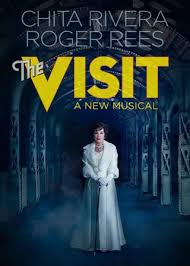
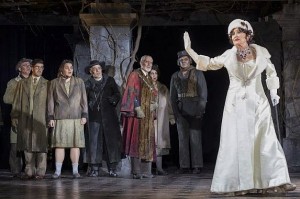
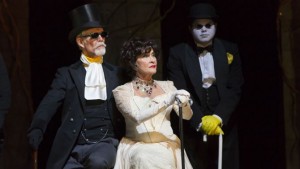
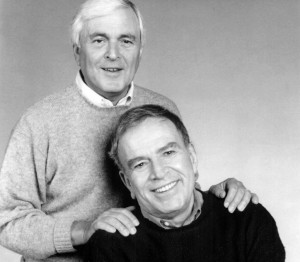
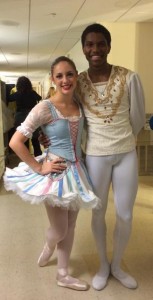
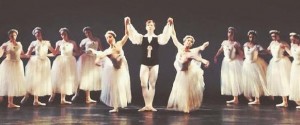
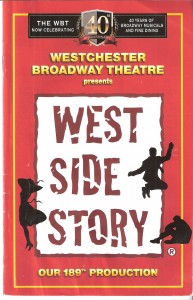
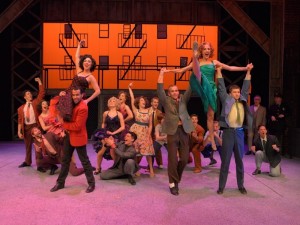
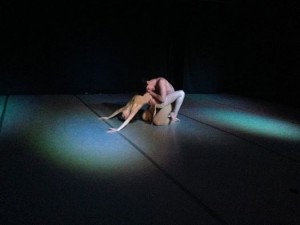
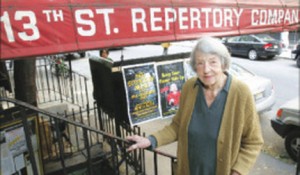
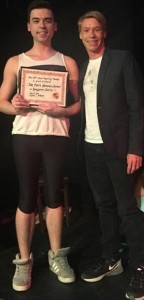
Leave a comment